Abstract
To evaluate critical exposure levels and the reversibility of lead neurotoxicity a group of lead exposed foundry workers and an unexposed reference population were followed up for three years. During this period, tests designed to monitor neurobehavioural function and lead dose were administered. Evaluations of 160 workers during the first year showed dose dependent decrements in mood, visual/motor performance, memory, and verbal concept formation. Subsequently, an improvement in the hygienic conditions at the plant resulted in striking reductions in blood lead concentrations over the following two years. Attendant improvement in indices of tension (20% reduction), anger (18%), depression (26%), fatigue (27%), and confusion (13%) was observed. Performance on neurobehavioural testing generally correlated best with integrated dose estimates derived from blood lead concentrations measured periodically over the study period; zinc protoporphyrin levels were less well correlated with function. This investigation confirms the importance of compliance with workplace standards designed to lower exposures to ensure that individual blood lead concentrations remain below 50 micrograms/dl.
Full text
PDF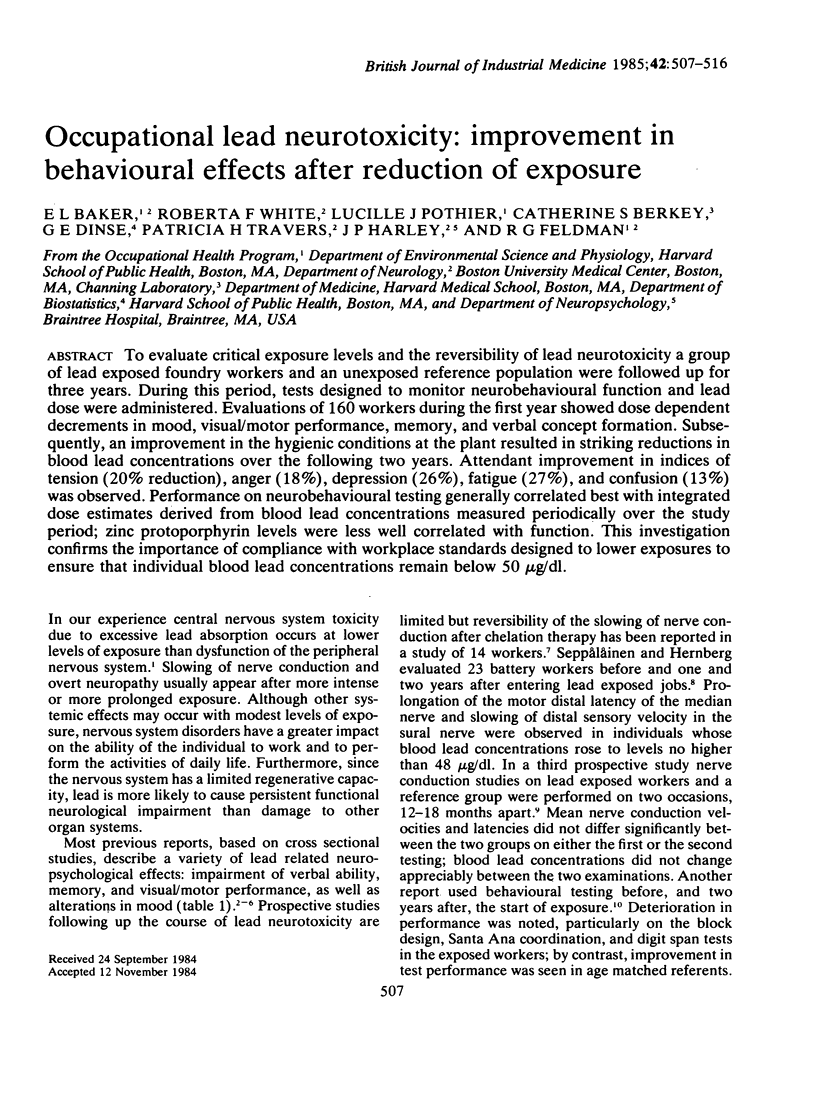
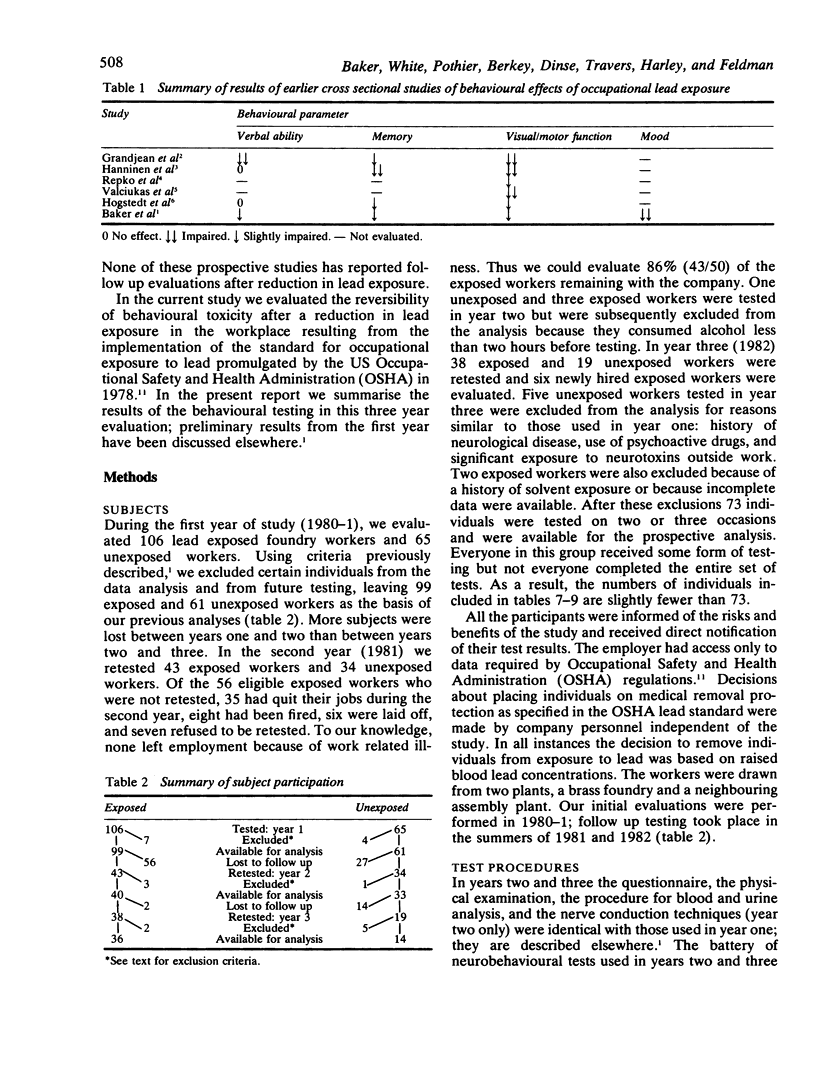
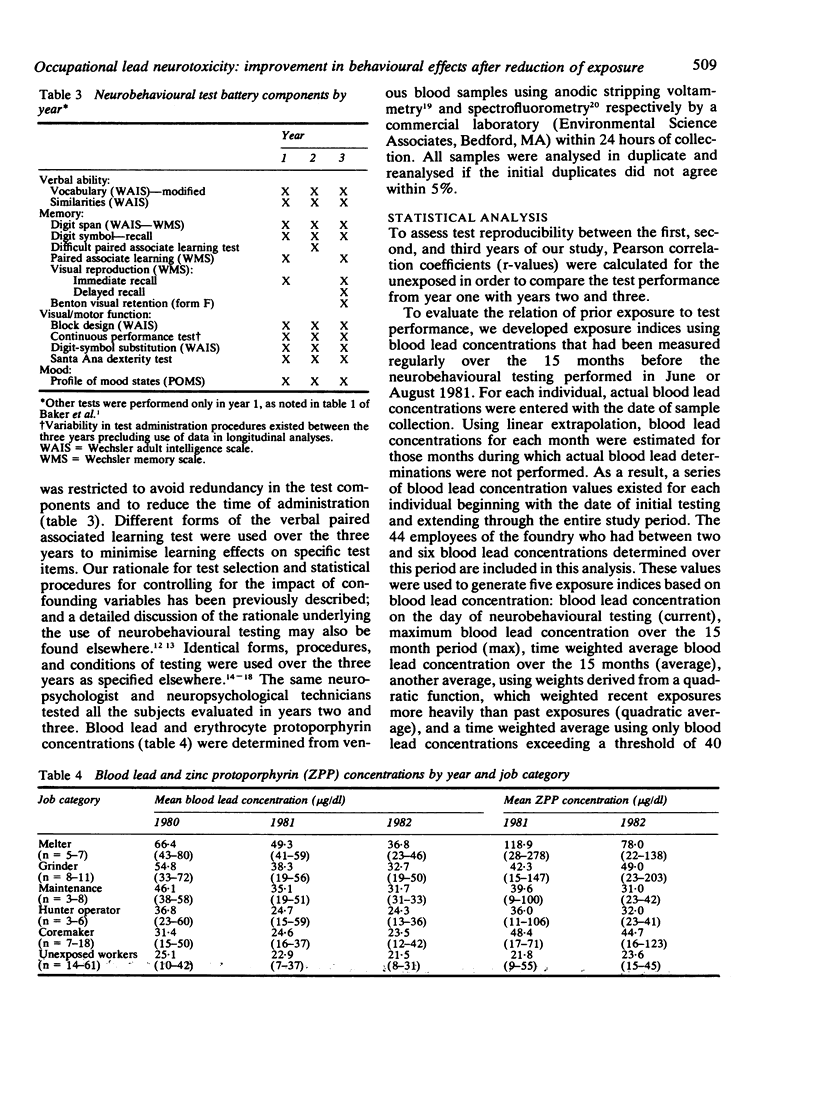
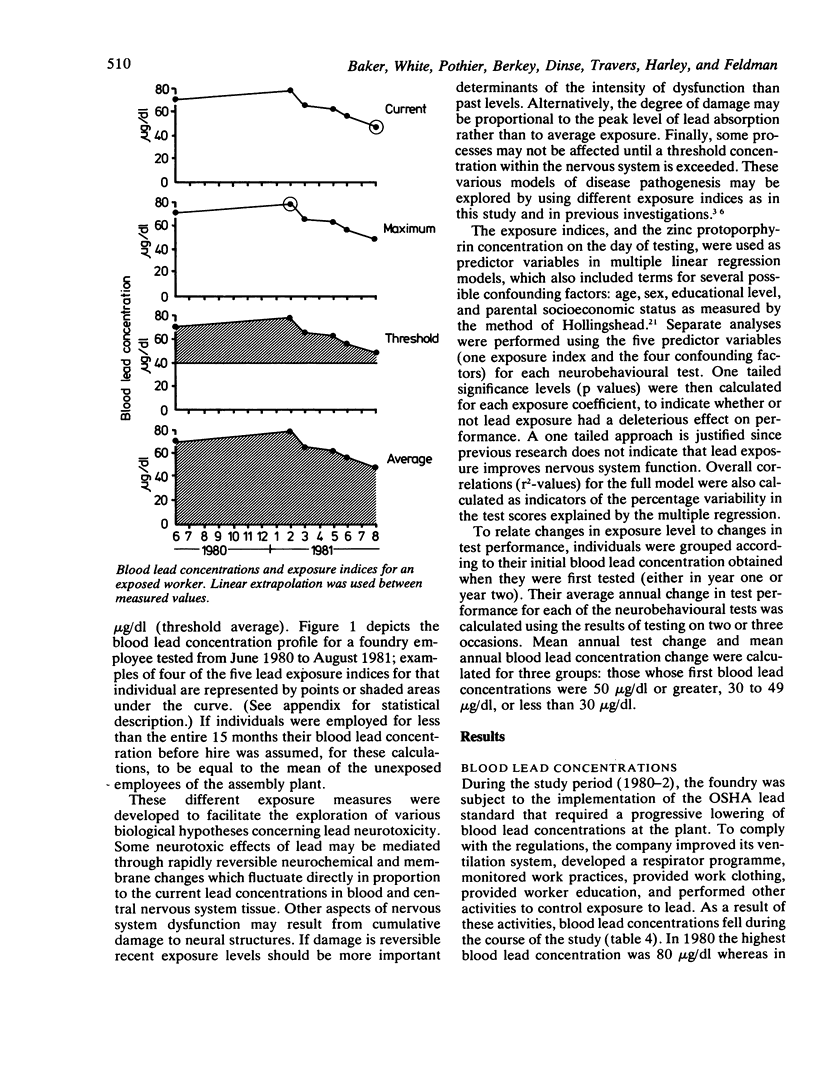
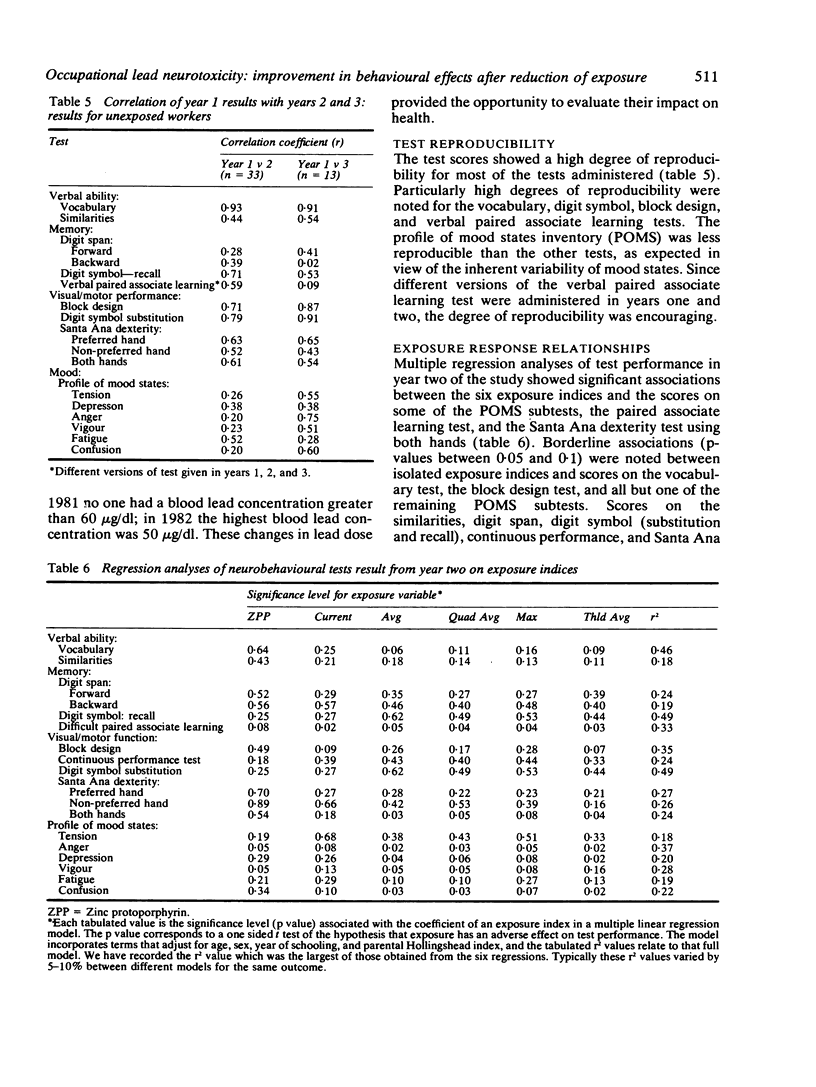
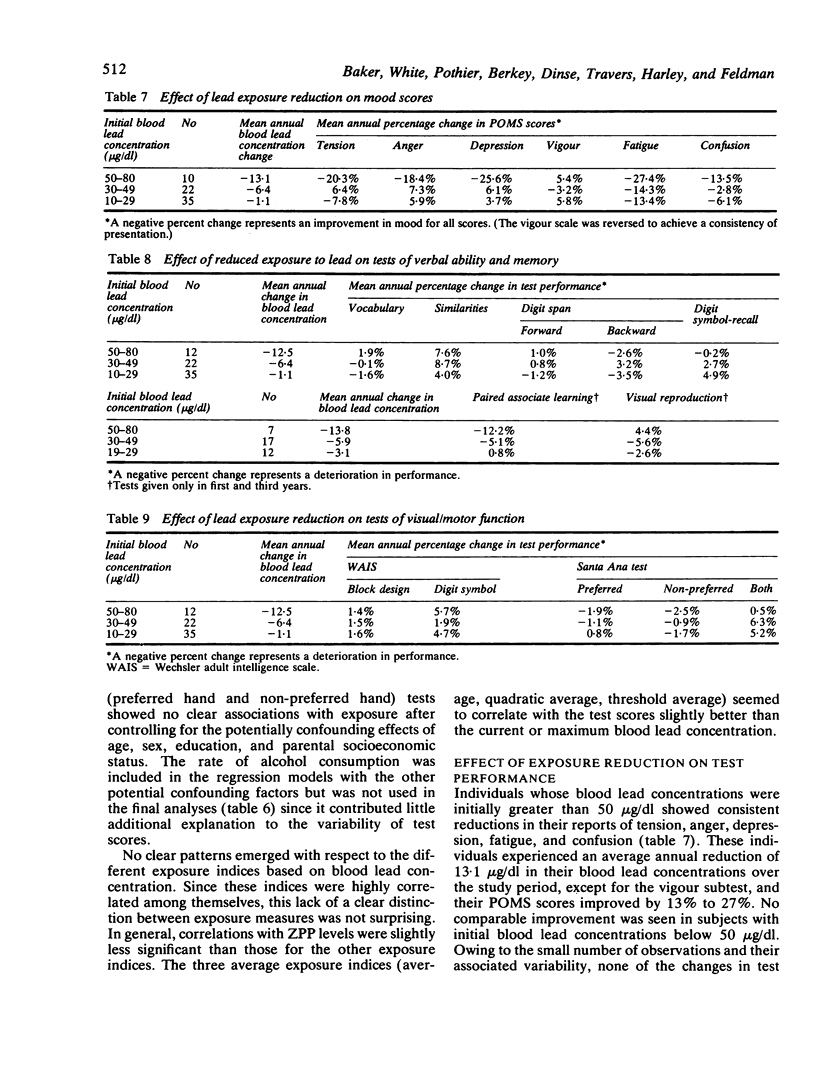
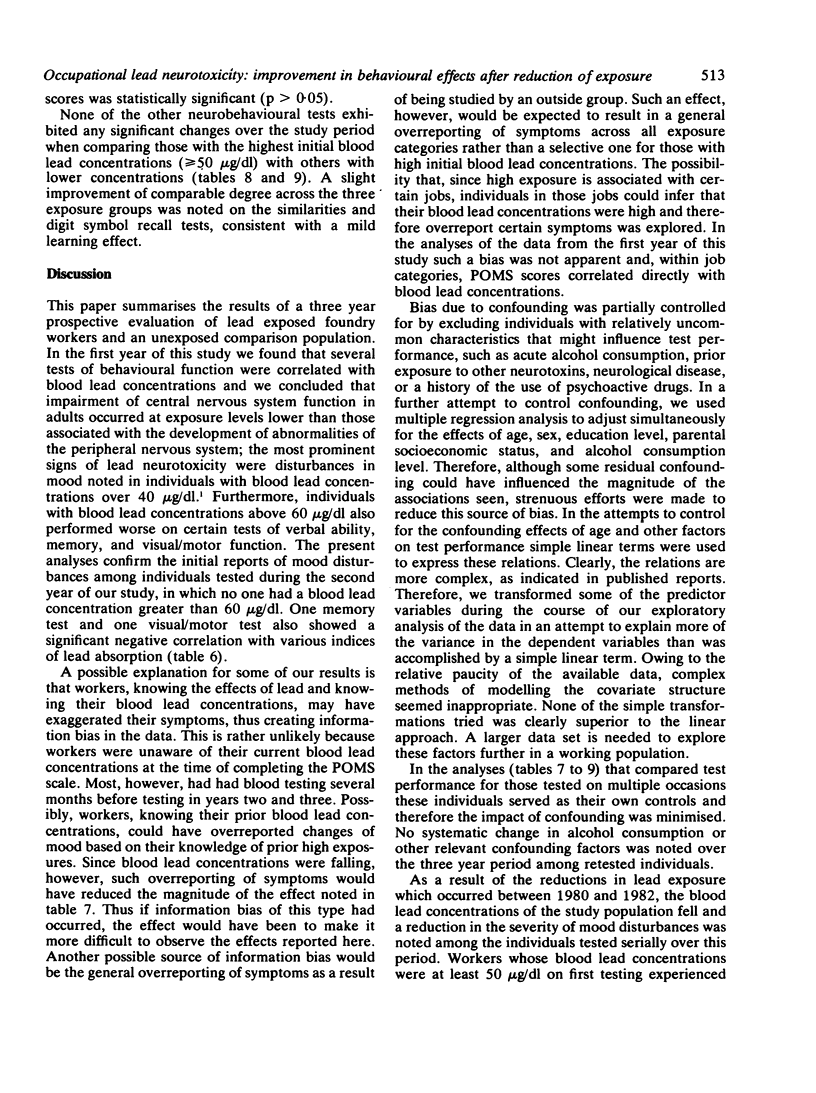
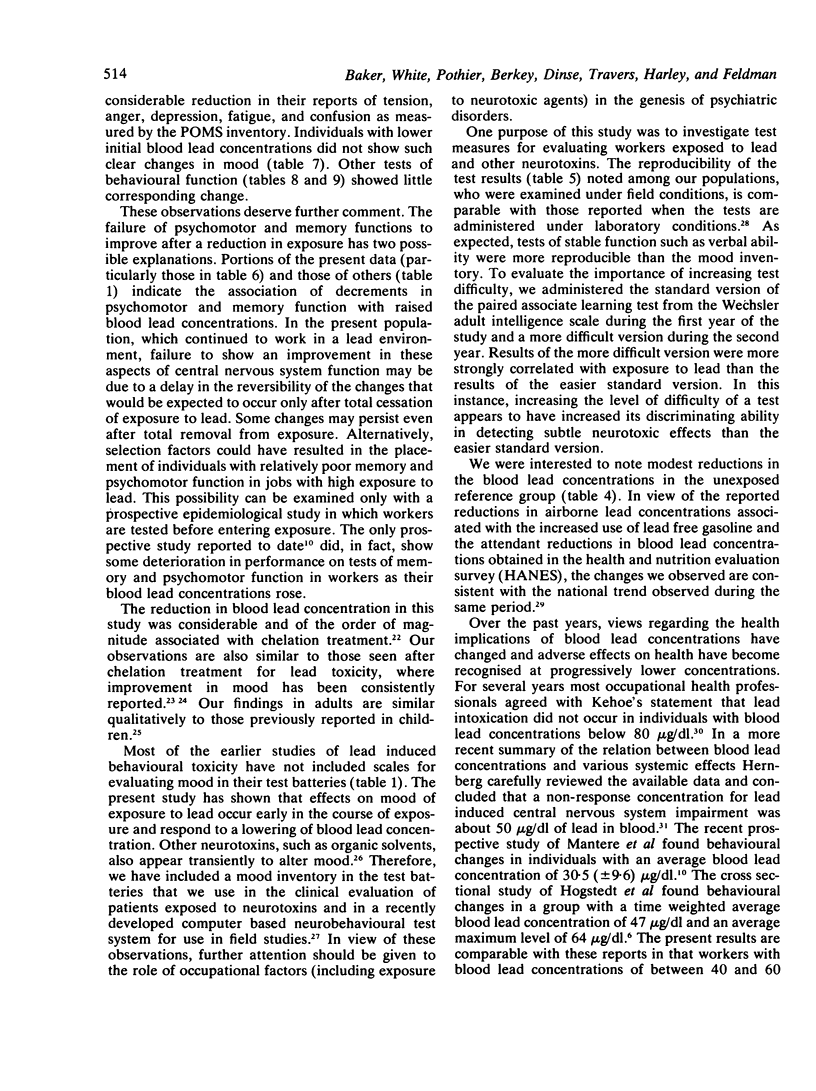
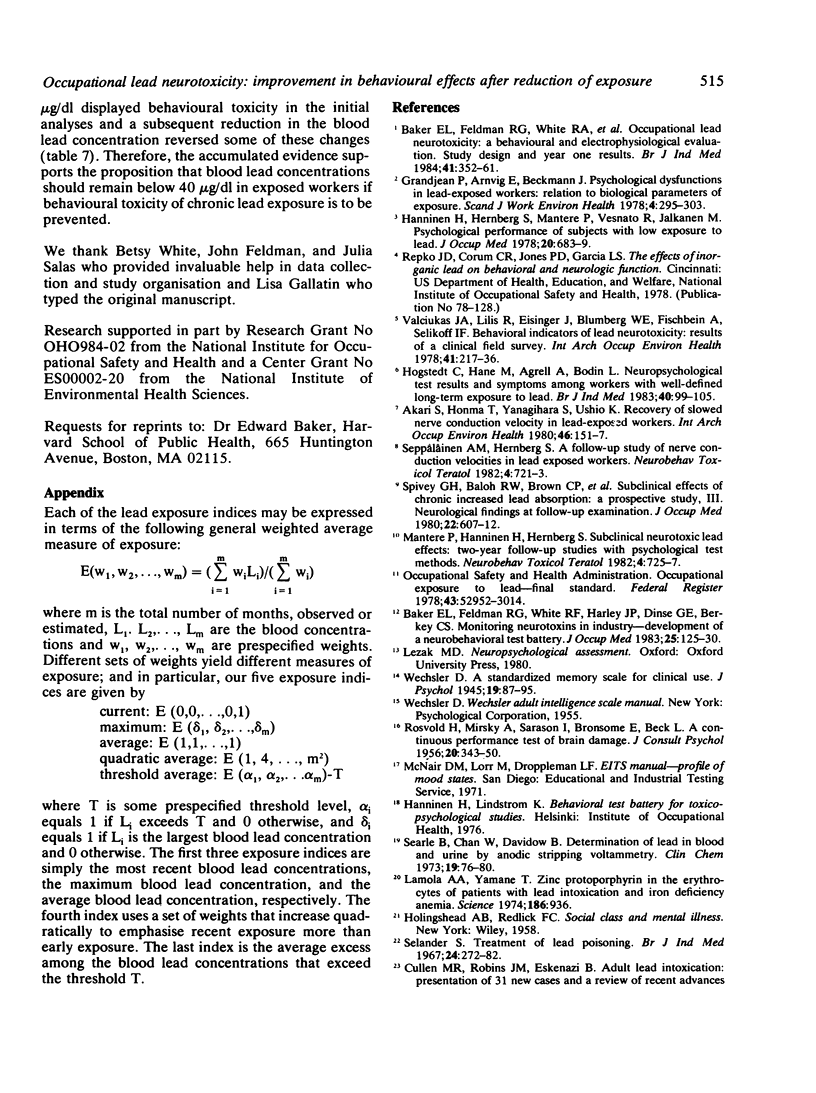
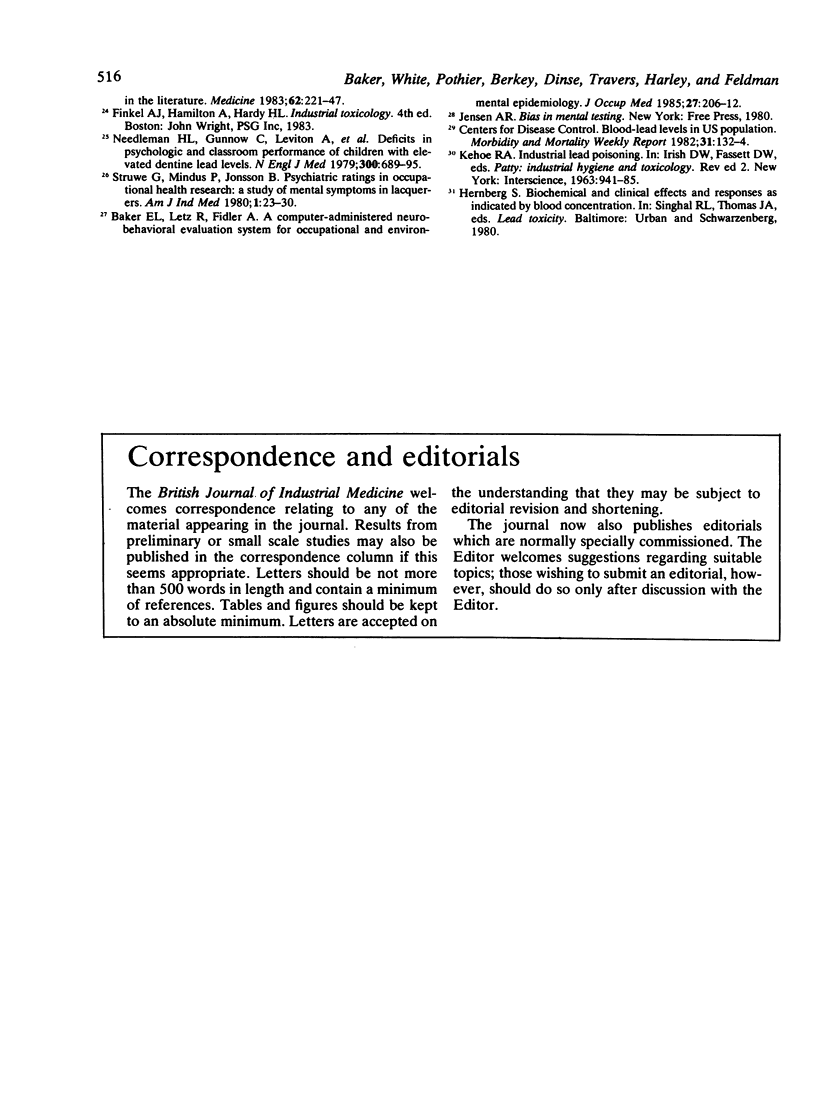
Selected References
These references are in PubMed. This may not be the complete list of references from this article.
- Araki S., Honma T., Yanagihara S., Ushio K. Recovery of slowed nerve conduction velocity in lead-exposed workers. Int Arch Occup Environ Health. 1980;46(2):151–157. doi: 10.1007/BF00378193. [DOI] [PubMed] [Google Scholar]
- BECK L. H., BRANSOME E. D., Jr, MIRSKY A. F., ROSVOLD H. E., SARASON I. A continuous performance test of brain damage. J Consult Psychol. 1956 Oct;20(5):343–350. doi: 10.1037/h0043220. [DOI] [PubMed] [Google Scholar]
- Baker E. L., Feldman R. G., White R. A., Harley J. P., Niles C. A., Dinse G. E., Berkey C. S. Occupational lead neurotoxicity: a behavioural and electrophysiological evaluation. Study design and year one results. Br J Ind Med. 1984 Aug;41(3):352–361. doi: 10.1136/oem.41.3.352. [DOI] [PMC free article] [PubMed] [Google Scholar]
- Baker E. L., Jr, Feldman R. G., White R. F., Harley J. P., Dinse G. E., Berkey C. S. Monitoring neurotoxins in industry: development of a neurobehavioral test battery. J Occup Med. 1983 Feb;25(2):125–130. [PubMed] [Google Scholar]
- Baker E. L., Letz R., Fidler A. A computer-administered neurobehavioral evaluation system for occupational and environmental epidemiology. Rationale, methodology, and pilot study results. J Occup Med. 1985 Mar;27(3):206–212. [PubMed] [Google Scholar]
- Cullen M. R., Robins J. M., Eskenazi B. Adult inorganic lead intoxication: presentation of 31 new cases and a review of recent advances in the literature. Medicine (Baltimore) 1983 Jul;62(4):221–247. [PubMed] [Google Scholar]
- Grandjean P., Arnvig E., Beckmann J. Psychological dysfunctions in lead-exposed workers. Relation to biological parameters of exposure. Scand J Work Environ Health. 1978 Dec;4(4):295–303. doi: 10.5271/sjweh.2696. [DOI] [PubMed] [Google Scholar]
- Haenninen H., Hernberg S., Mantere P., Vesanto R., Jalkanen M. Psychological performance of subjects with low exposure to lead. J Occup Med. 1978 Oct;20(10):683–689. [PubMed] [Google Scholar]
- Hogstedt C., Hane M., Agrell A., Bodin L. Neuropsychological test results and symptoms among workers with well-defined long-term exposure to lead. Br J Ind Med. 1983 Feb;40(1):99–105. doi: 10.1136/oem.40.1.99. [DOI] [PMC free article] [PubMed] [Google Scholar]
- Lamola A. A., Yamane T. Zinc protoporphyrin in the erythrocytes of patients with lead intoxication and iron deficiency anemia. Science. 1974 Dec 6;186(4167):936–938. doi: 10.1126/science.186.4167.936. [DOI] [PubMed] [Google Scholar]
- Mantere P., Hänninen H., Hernberg S. Subclinical neurotoxic lead effects: two-year follow-up studies with psychological test methods. Neurobehav Toxicol Teratol. 1982 Nov-Dec;4(6):725–727. [PubMed] [Google Scholar]
- Needleman H. L., Gunnoe C., Leviton A., Reed R., Peresie H., Maher C., Barrett P. Deficits in psychologic and classroom performance of children with elevated dentine lead levels. N Engl J Med. 1979 Mar 29;300(13):689–695. doi: 10.1056/NEJM197903293001301. [DOI] [PubMed] [Google Scholar]
- Searle B., Chan W., Davidow B. Determination of lead in blood and urine by anodic stripping voltammetry. Clin Chem. 1973 Jan;19(1):76–80. [PubMed] [Google Scholar]
- Selander S. Treatment of lead poisoning. A comparison between the effects of sodium calciumedetate and penicillamine administered orally and intravenously. Br J Ind Med. 1967 Oct;24(4):272–282. doi: 10.1136/oem.24.4.272. [DOI] [PMC free article] [PubMed] [Google Scholar]
- Seppäläinen A. M., Hernberg S. A follow-up study of nerve conduction velocities in lead exposed workers. Neurobehav Toxicol Teratol. 1982 Nov-Dec;4(6):721–723. [PubMed] [Google Scholar]
- Spivey G. H., Baloh R. W., Brown C. P., Browdy B. L., Campion D. S., Valentine J. L., Morgan D. E., Culver B. D. Subclinical effects of chronic increased lead absorption--a prospective study. III. Neurologic findings at follow-up examination. J Occup Med. 1980 Sep;22(9):607–612. [PubMed] [Google Scholar]
- Struwe G., Mindus P., Jönsson B. Psychiatric ratings in occupational health research: a study of mental symptoms in lacquerers. Am J Ind Med. 1980;1(1):23–30. doi: 10.1002/ajim.4700010105. [DOI] [PubMed] [Google Scholar]
- Valciukas J. A., Lilis R., Eisinger J., Blumberg W. E., Fischbein A., Selikoff I. J. Behavioral indicators of lead neurotoxicity: results of a clinical field survey. Int Arch Occup Environ Health. 1978 Jul 14;41(4):217–236. doi: 10.1007/BF00378753. [DOI] [PubMed] [Google Scholar]


